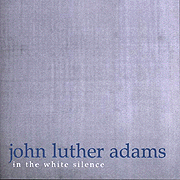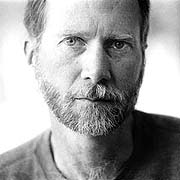| Artist: John Luther Adams Album: In the White Silence Released: 29 April 2003 |   |
|
For John Luther Adams, composing is not about finding the notes, it's about losing them. His vast landscapes of sound deal with the beautiful desolation of vast tundra landscapes and the fundamental materials of music: sound and time. Adams' composition
Adopted by the post-minimalism movement, Adams' craft strives to transcend conventional boundaries of musical composition. In the White Silence, is "composed of continuously rising and falling lines, layered and diffused into an allover texture of frozen counterpoint. Individual sounds are diffused in a continuous conformation, always changing but always with a minimum of 'incident'." Throughout its 75 minute course, the unification of sustained tones, static textures, consonance and modal harmony suggest the idea of music as an "immeasurable space". "Listening to allover textures, it's difficult to concentrate for long on a single sound. The music moves us beyond syntactical meaning, beyond images, into the experience of listening within a larger, indivisible presence." Adams' works aspire to, "evoke a wholeness of music, a sounding presence somehow equivalent to that of a vast landscape."
Referencing his fascination for the "treeless, windswept expanses of the Arctic", Adams ponders his primary musical influence, "the colors on the snow suggest to me broad diatonic washes suffused with gradually-changing chromatic harmonies." - Chuck van Zyl/STAR'S END 15 May 2003 | |
| Reviews |